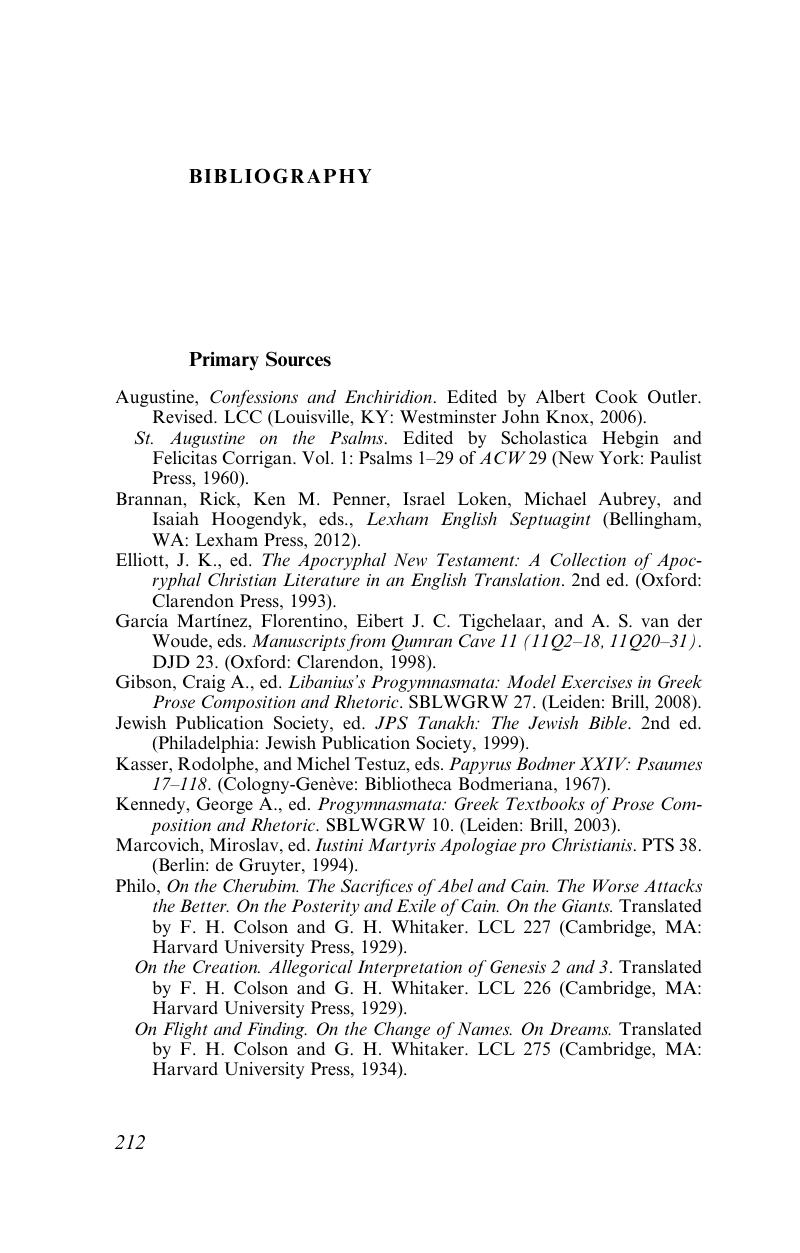 Divine Discourse in the Epistle to the Hebrews
Divine Discourse in the Epistle to the Hebrews Book contents
- Divine Discourse in the Epistle to the Hebrews
- Society for New Testament Studies
- Divine Discourse in the Epistle to the Hebrews
- Copyright page
- Dedication
- Contents
- Acknowledgments
- 1 The Author’s Exegetical Method and Speech in Hebrews
- 2 Intra-Divine Discourse (1)
- 3 Intra-Divine Discourse (2)
- 4 Extra-Divine Discourse
- 5 Divine Discourse and the Structure of Hebrews
- 6 Conclusion
- Bibliography
- Scripture and Primary Source Index
- Secondary Source Index
- Subject Index
- References
Bibliography
Published online by Cambridge University Press: 14 August 2020
- Divine Discourse in the Epistle to the Hebrews
- Society for New Testament Studies
- Divine Discourse in the Epistle to the Hebrews
- Copyright page
- Dedication
- Contents
- Acknowledgments
- 1 The Author’s Exegetical Method and Speech in Hebrews
- 2 Intra-Divine Discourse (1)
- 3 Intra-Divine Discourse (2)
- 4 Extra-Divine Discourse
- 5 Divine Discourse and the Structure of Hebrews
- 6 Conclusion
- Bibliography
- Scripture and Primary Source Index
- Secondary Source Index
- Subject Index
- References
Summary

- Type
- Chapter
- Information
- Divine Discourse in the Epistle to the HebrewsThe Recontextualization of Spoken Quotations of Scripture, pp. 212 - 225Publisher: Cambridge University PressPrint publication year: 2020
